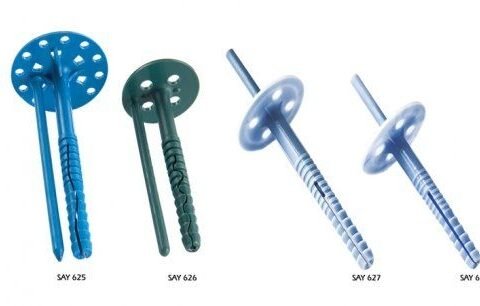Materials used for the facade insulation
Insulation plates: mainly EPS, XPS and synthetic binder-based mineral wool heat insulation plates are used for the facade insulation.
Expanded polystyrene plates (EPS): it is a white heat-insulated plate with close pores made of oil. The plate with carbon content is gray. Still and dry air remained in the pores. This is the best and economical insulating material. The plate having density of 15 / 30 kg/m3 is very light and does not additionally load the facade. The thickness does not decrease and constantly maintains its operating characteristics.
Extruded foam polystyrene (XPS) plates: are produced by extrusion of foam polystyrene. This plate for heat insulation with high resistance to pressure and high heat conductivity, it does not contain water and is resistant to dampness.
synthetic binder-based mineral wool heat insulation plates: made from minerals such as basalt, dolomite, limestone. It is obtained from the melted glass by various methods, by fiber manufacture. The diameter of fiber is 3-5 microns. 99% of the material consists of air. This material becomes wet easily and, in the case of wetting, loses all performance characteristics. Although in recent years, due to the addition of water repellent silicone, dryness of the material is ensured.
Bonding solution: it is horizontally and vertically polymer-reinforced, cement-based, non-flammable, frost, water, and moisture-resistant, asbestos-free material used for insulation plates bonding on the building facade.
Heat-insulation plaster: it is used to cover insulation plates and reinforcement greed pargeting. It is a cement-based, hydrophobic, frost and water resistant material with a long service life. Painting on this material directly is allowed.
Facade decoration plaster: this white material is resistant to water, frost and bad weather conditions, with a long operational life, made on the basis of cement, with the addition of acrylic polymer, which is used during heat-insulating plastering of heat-insulating plates during heat-insulating works and for decorative purposes
Reinforcement greed: this material is made of glass fiber, weighing 145-160 g / m2, used to compensate the tension stresses on the plaster on the insulation plates and to avoid cracks. In places where high resistance to impact is necessary, it is necessary to use a grid weighing 340 gm/m2.
Plastic Insulation system anchor: it is mounted on the external surface of insulation boards to reduce the effect of wind on the insulated facade. In case of standard installation, 6 pieces of anchors are necessary per 1 sq.m. The number of anchors may vary depending on the height of the building and external conditions.
Angle bar: used to protect building angels and window edges from mechanical impact and to provide right angles, made from plastic or aluminum, with or without reinforcement greed.
Supporting profile: used ahead of the plates to protect the system from rain, wind, other external factors, as well as a template for a layer of plaster. There are produced aluminum or galvanized profiles.
For detailed information about insulation materials, please contact the company Turko.




